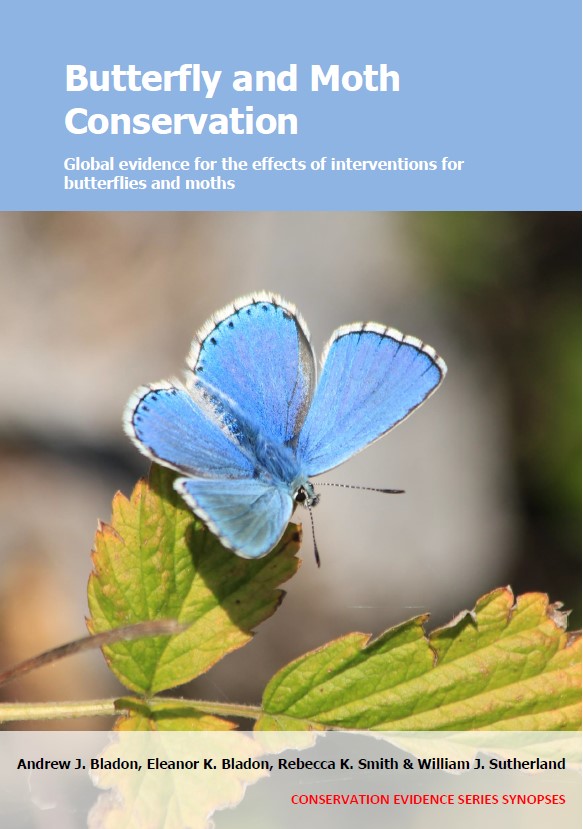Actions to conserve biodiversity
We have summarised evidence from the scientific literature about the effects of actions to conserve wildlife and ecosystems.
Review the evidence from the studies
Not sure what Actions are? Read a brief description.
Search for evidence
e.g. "frogs chytrid"
152 Actions found
Refine
Hide
152 Actions found
Download Actions
| 0 selected |
|
Order results by:
| Action | Effectiveness | Studies | Category | |
|---|---|---|---|---|
|
Protect and connect habitat along elevational gradients Action Link |
No evidence found (no assessment) | 0 |
|
|
|
Enhance natural habitat to improve landscape connectivity to allow for range shifts Action Link |
No evidence found (no assessment) | 0 |
|
|
|
Manage natural waterbodies in arid areas to prevent desiccation Action Link |
No evidence found (no assessment) | 0 |
|
|
|
Create microclimate and microhabitat refuges Action Link |
No evidence found (no assessment) | 0 |
|
|
|
Provide shelter habitat against highly adverse weather conditions Action Link |
No evidence found (no assessment) | 0 |
|
|
|
Retain or plant trees to act as windbreaks Action Link |
Awaiting assessment | 1 |
|
|
|
Restore or create new habitats after mining and quarrying Action Link |
Awaiting assessment | 4 |
|
|
|
Legally protect butterflies and moths Action Link |
No evidence found (no assessment) | 0 |
|
|
|
Use education programmes and local engagement to reduce persecution or exploitation of species Action Link |
No evidence found (no assessment) | 0 |
|
|
|
Legally protect large native trees Action Link |
No evidence found (no assessment) | 0 |
|
|
|
Strengthen cultural traditions such as sacred groves that prevent timber harvesting Action Link |
No evidence found (no assessment) | 0 |
|
|
|
Use selective or reduced impact logging instead of conventional logging Action Link |
Awaiting assessment | 4 |
|
|
|
Harvest groups of trees or use thinning instead of clearcutting Action Link |
Awaiting assessment | 3 |
|
|
|
Use patch retention harvesting instead of clearcutting Action Link |
No evidence found (no assessment) | 0 |
|
|
|
Use leave-tree harvesting instead of clearcutting Action Link |
No evidence found (no assessment) | 0 |
|
|
|
Use shelterwood harvesting instead of clearcutting Action Link |
Awaiting assessment | 3 |
|
|
|
Retain riparian buffer strips during timber harvest Action Link |
No evidence found (no assessment) | 0 |
|
|
|
Create or retain deadwood in forest management Action Link |
Awaiting assessment | 1 |
|
|
|
Re-plant native trees in logged areas Action Link |
Evidence not assessed | 1 |
|
|
|
Reduce planting density to create warmer woodlands Action Link |
No evidence found (no assessment) | 0 |
|
|
|
Encourage natural regeneration in former plantations or logged forest Action Link |
Evidence not assessed | 4 |
|
|
|
Use prescribed fire to maintain or restore disturbance in forests Action Link |
Evidence not assessed | 5 |
|
|
|
Change season/timing of prescribed burning Action Link |
Awaiting assessment | 2 |
|
|
|
Leave some areas unburned during prescribed burning Action Link |
Awaiting assessment | 2 |
|
|
|
Use fire suppression/control Action Link |
No evidence found (no assessment) | 0 |
|
Download Actions
| 0 selected |
|

Butterfly and Moth Conservation - Published 2023
Butterfly and Moth Synopsis
Watch this search
If you are familiar with RSS feeds, please click the button below to retrieve the feed URL:
RSS feed for this searchIf you are unfamiliar with RSS feeds, we would suggest reading this BBC article.
Unfortunately, due to the number of feeds we have available, we cannot provide e-mail updates. However, you could use tools such as Feed My Inbox to do this for you.
What are 'Individual studies' and 'Actions'?
Individual studies
An individual study is a summary of a specific scientific study, usually taken from a scientific journal, but also from other resources such as reports. It tells you the background context, the action(s) taken and their consequences.
If you want more detail please look at the original reference.
Actions
Each action page focuses on a particular action you could take to benefit wildlife or ecosystems.
It contains brief (150-200 word) descriptions of relevant studies (context, action(s) taken and their consequences) and one or more key messages.
Key messages show the extent and main conclusions of the available evidence. Using links within key messages, you can look at the paragraphs describing each study to get more detail. Each paragraph allows you to assess the quality of the evidence and how relevant it is to your situation.
Where we found no evidence, we have been unable to assess whether or not an intervention is effective or has any harmful impacts.





)_2023.JPG)














